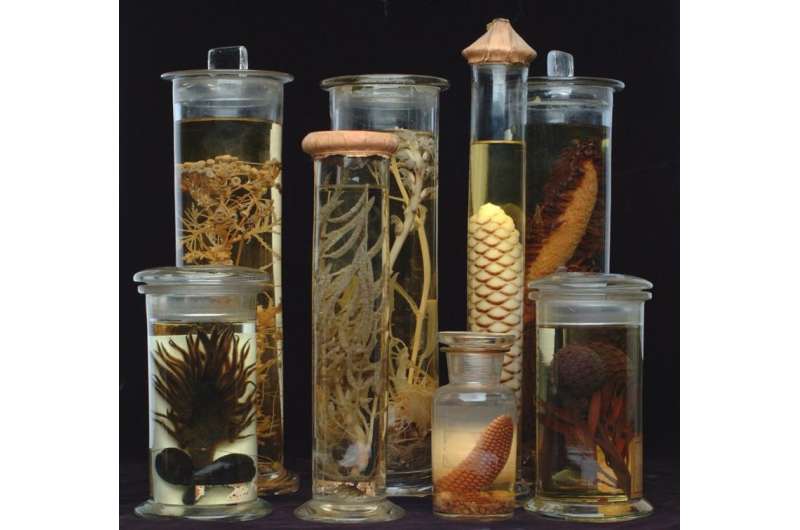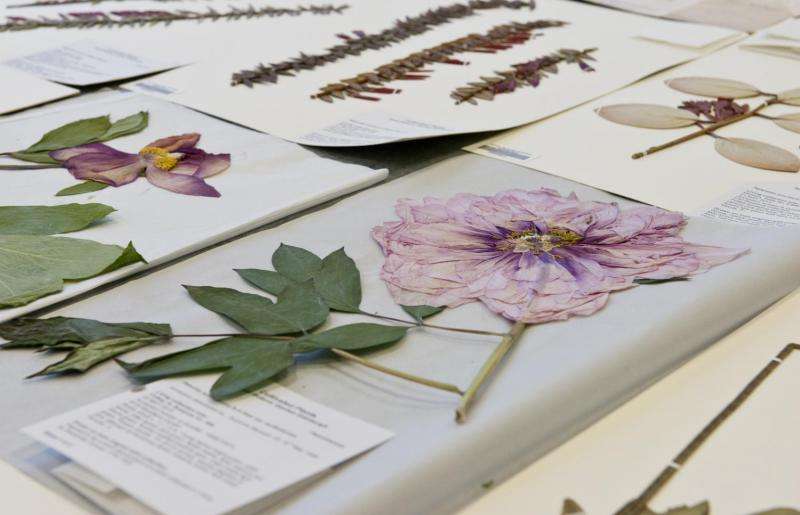Half the world's natural history specimens may have the wrong name

As many as 50% of all natural history specimens held in the world's museums could be wrongly named, according to a new study by researchers from Oxford University and the Royal Botanic Garden Edinburgh.
Even the most accomplished naturalist can find it difficult to tell one species of plant from another or accurately decide which genus a small insect belongs to. So when a new specimen arrives at a museum, finding the right name from existing records can sometimes prove difficult. In turn, that can lead to specimens being given the wrong name - which can prove problematic for biologists.
'Many areas in the biological sciences, including academic studies of evolution and applied conservation, as well as achieving the 2020 targets under the Convention on Biological Diversity, are underpinned by accurate naming,' explains Dr Robert Scotland of the Department of Plant Sciences at Oxford. 'Without accurate names on specimens, the records held in collections around the world would make no sense, as they don't correspond to the reality outside.' Dr Scotland also points out that the negative effects of this are increasingly multiplied as large databases are aggregated online, gathering together vast amounts of specimen data, many of which have incorrect species names.
So his team, which includes researchers from the University of Oxford and the Royal Botanic Garden Edinburgh, decided to carry out a formal study to establish just how bad the situation was. Gathering data into the Botanical Research and Herbarium Management System (BRAHMS), developed at Oxford by co-author Denis Filer, it was possible to compare and analyse the species names used on the sampled specimens. The team actually used three different approaches to work out how many mistakes there were likely to be.
First, they considered how the name of a single specimen might change over time. Over the years, specimens in museums gradually have their names reviewed, as scientists learn more about the family, or new specimens help to redefine an existing species. The team studied 4,500 specimens of the African ginger genus Aframomum, a detailed monographic study which had been completed in 2014, providing an accurate account of all the species and their specimens. The team were surprised to find that prior to this monograph at least 58% of specimens were either misidentified, given an outdated or redundant name, or only identified to the genus or family. As few plant groups have been recently monographed, the team suggests that a similar percentage of wrong names might be expected in many other groups.
Next, the researchers considered how duplicated specimens from the same plant might be given different names in different museums. It is common practice for plant collectors to take several samples of a single plant and distribute these to museums and herbaria around the world. 'It's a bit like separating identical twins at birth,' explains Zoë Goodwin, the first author of the paper. Once distributed, they are often independently named by an in-house expert. Analysing the Dipterocarpaceae, a family of rainforest trees from Asia, the team found that 9,222 collections had been divided into two or more duplicates, making a total of 21,075 specimens. Of these, 29% had different names in different herbaria. 'And at least one of these names must be wrong,' points out John Wood, another of the authors on the paper.

Finally, the team considered mistakes contained within aggregated records stored online. They scoured the records of Ipomoea - a large and diverse genus which includes the sweet potato - on the Global Biodiversity Information Facility database. Examining the names found on 49,500 specimens from the Americas, they found that 40% of these were outdated synonyms rather than the current name, and 16% of the names were unrecognisable or invalid. In addition, 11% of the specimens weren't identified, being given only the name of the genus.
The team thinks there are three main reasons for these inaccurate names. First, they suggest that there simply isn't enough time or research devoted to writing monographs. Second, they point out that the number of specimens in the world is increasing too quickly for research to keep up - with 50% of the world's specimens in 2000 having been collected since 1969. And finally, there are now so many museums and herbaria around the world that experts cannot view all the specimens in a genus and revise the names accordingly.
But there is a more worrying problem underlying their snapshot of incorrect naming. Of 1.8 million different described species on Earth, 0.35 million are flowering plants and a further 0.95 million are insects. While Dr Scotland and his team have shown that the names of flowering plants are commonly incorrect, other researchers have shown that the insect kingdom is potentially in an even worse situation. 'We think a conservative estimate is that up to half the world's natural history specimens could be incorrectly named,' says Goodwin.
The team suggests that digitised specimens - that can be remotely accessed so that researchers anywhere can use them for species-level taxonomy - as well as DNA sequencing are two essential tools that can be used to improve the names associated with the world's natural history collections. But they also caution that these approaches will only improve the quality of naming if integrated alongside taxonomic projects.
For their part, the team is already actively exploring new integrated approaches to taxonomy and has brought these techniques together into what they call 'foundation monographs' (see www.springer.com/-/2/AU_yD0s52brxj7RSZdi1 and phytokeys.pensoft.net/articles.php?id=5459 ). They have recently published two such studies, for Convolvulus and Ipomoea in Bolivia.
More information: Current Biology, Goodwin et al.: "Widespread mistaken identity in tropical plant collections" dx.doi.org/10.1016/j.cub.2015.10.002
Journal information: Current Biology
Provided by Oxford University



















